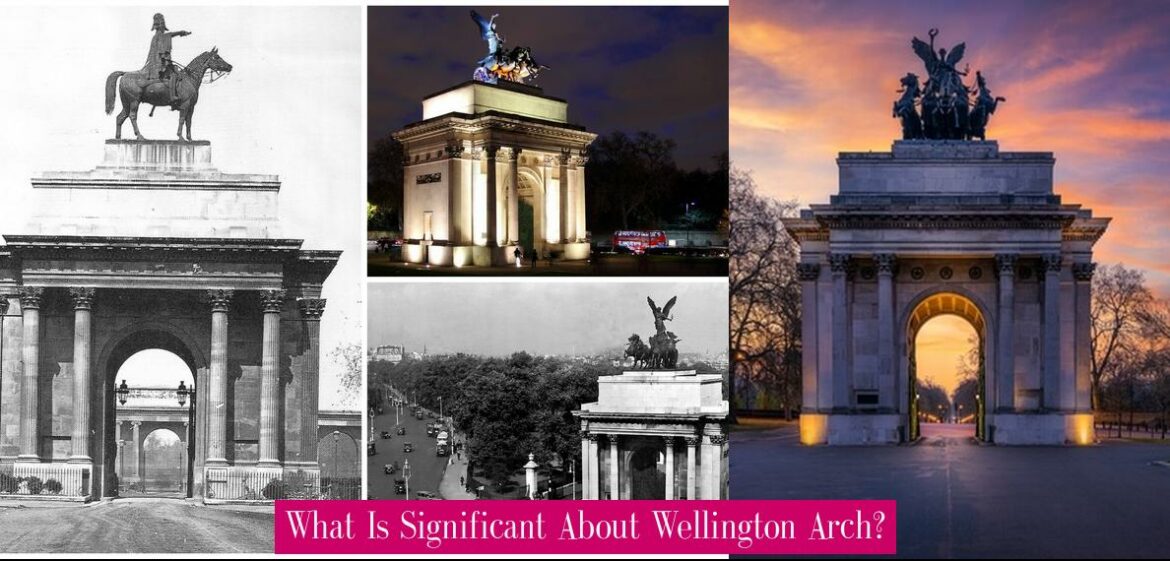Wellington Arch: A Monument of Triumph, Mishaps, and a Certain Horse-Drawn Fashion Faux Pas
Ah, Wellington Arch. A monument so grand, so imposing, so… well, let’s just say it has a history as dramatic as a Shakespearean play. You’ve probably seen it, looming over Hyde Park Corner like a giant, stone exclamation point. But have you ever stopped to wonder, « What’s the deal with this thing?”
Well, my dear reader, buckle up because this story is about to get interesting.
A Triumphant Entrance… to Nowhere
Imagine this: you’re King George IV, the reigning monarch of England, and you’ve just had a grand new palace built. It’s Buckingham Palace, a monument to opulence and royal power. “How do we make it even more awesome?” you ask your architects. « Build a giant triumphal arch as the main entrance!” they exclaim.
Enter Wellington Arch, originally designed by John Nash, the same architect who gave us Regent’s Street and Buckingham Palace itself. It was supposed to be the grandest entrance you’d ever see, a gateway to royalty and splendor.
But here’s the thing: the arch was never actually used as an entrance. Why? Because of the grandest, most spectacular, most utterly ridiculous statue you’ve ever seen.
The Duke and the Horse-Drawn Fashion Disaster
You see, on top of Wellington Arch, they planned to place a massive bronze statue of the Duke of Wellington, the hero of Waterloo. This wasn’t just any statue, oh no. This was a colossal, equestrian masterpiece, depicting the Duke astride a rearing horse, his sword held high in victory.
The problem? The horse was massive. So massive, in fact, that it dwarfed the arch itself, creating a sort of architectural Frankenstein monster. The Duke, perched atop his steed, looked like he was about to topple the whole thing over.
The public was aghast. The newspapers were filled with scathing reviews. « A monstrous monstrosity, » they called it. “A horse-drawn fashion faux pas.”
The statue, much to its creator’s chagrin, was removed in 1846. It was replaced with a simpler design, a more modest figure of the Duke standing on a podium.
A Monument of Missed Opportunities
So, what’s the significance of Wellington Arch? Well, it’s a monument to missed opportunities, for starters. It was never truly a triumphal arch, because it was never properly used. The original statue was a colossal blunder, a testament to the fact that even the most prestigious projects can go awry.
But Wellington Arch is also a symbol of resilience. It was redesigned, reimagined, and eventually crowned with the magnificent Quadriga, a statue of the Angel of Peace descending on a chariot pulled by four horses. It’s a powerful reminder that even when things go wrong, we can find a way to make them right.
A Legacy of Traffic Jams and Tourist Snapshots
Today, Wellington Arch stands as a testament to the grandiosity of the past, a reminder of the triumphs and follies of the British Empire. It’s a popular spot for tourists, a backdrop for countless selfies and Instagram posts. And yes, it still causes traffic jams, just like it always has.
But despite its checkered past, Wellington Arch remains one of London’s most iconic landmarks. It’s a powerful symbol of history, resilience, and, yes, even a bit of a fashion faux pas. And that, my dear reader, is what makes it so fascinating.

